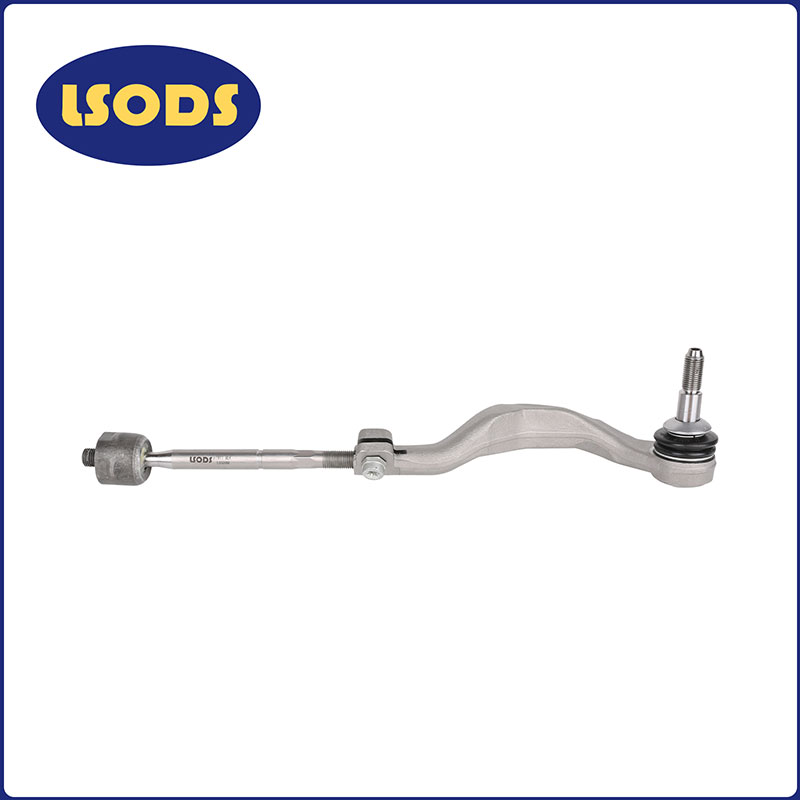Understanding Car Control Arms: Essential Components for Vehicle Suspension
2025-04-08
When you think about your car's suspension system, components like shocks, springs, and struts often come to mind. However, one of the most important yet often overlooked parts of this system is the car control arm. This crucial component plays a significant role in ensuring that your vehicle’s wheels stay aligned and that you experience a smooth and controlled ride.
But what exactly is a control arm, and why is it so essential to the overall performance of your vehicle? In this blog, we will explore the role of control arms in your car, the different types, and why maintaining them is vital for your safety and driving experience.
What Is a Car Control Arm?
A car control arm, also known as an A-arm due to its distinctive shape, is a key component of your vehicle’s suspension system. It connects the chassis of the car to the wheel assembly, specifically the steering knuckle. The control arm allows for up-and-down movement of the wheels while keeping them properly aligned with the body of the car. This movement is essential for maintaining proper tire contact with the road, ensuring that your car handles well and provides stability while driving.
Control arms are designed to absorb and manage the forces that come from driving over rough terrain, cornering, and braking. Without them, the suspension system wouldn’t be able to effectively manage these forces, leading to poor handling and potentially dangerous driving conditions.
Types of Control Arms
While all control arms serve the same basic function, there are different designs based on the specific needs of the vehicle. The two most common types are:
1. Upper Control Arm: This is located on the top of the wheel assembly. In some cars, the upper control arm is more important for wheel alignment, while in others, it plays a secondary role to the lower control arm.
2. Lower Control Arm: This is generally the most important type of control arm and is located beneath the wheel assembly. The lower control arm bears most of the forces generated by the road and vehicle movements. In many vehicles, it’s the primary load-bearing control arm.
Control arms can be further classified based on their specific design and material construction, such as:
- Stamped Steel Control Arms: These are cost-effective, commonly found in older vehicles, and are made from steel that is stamped into shape. They are durable but can be heavy.
- Cast Aluminum Control Arms: These are lighter than steel versions and are often used in modern vehicles for improved performance and fuel efficiency.
- Multi-Link Suspension Control Arms: In vehicles with more complex suspension systems, multiple control arms are used to provide better handling and stability. These are often found in luxury or performance vehicles.
How Do Control Arms Work?
Control arms work in conjunction with other suspension components to ensure that the wheels remain aligned and that the vehicle handles correctly. When you drive over bumps or turn corners, the suspension system allows for controlled movement of the wheels. The control arm helps manage this movement, allowing the wheel to pivot while maintaining proper alignment with the vehicle’s body.
The control arm is typically equipped with bushings or ball joints that allow it to pivot freely, absorbing vibrations and reducing road noise. These joints are key to ensuring smooth movement. However, over time, these components can wear out, affecting the performance of the control arm and the suspension system.
The Role of Control Arms in Vehicle Handling
The importance of control arms extends beyond just keeping your wheels in place. They play a significant role in your vehicle’s overall handling and comfort. Here’s how:
1. Wheel Alignment: Control arms help maintain the proper alignment of the wheels, ensuring they are perpendicular to the road surface. Misalignment caused by a faulty control arm can lead to uneven tire wear, poor handling, and compromised safety.
2. Suspension Performance: When the control arm functions correctly, it helps the suspension system absorb shocks from the road, providing a smoother ride. It allows the suspension components, such as shocks and struts, to do their job more effectively, leading to better ride quality.
3. Steering Precision: Because the control arm is connected to the steering knuckle, it directly affects your vehicle's steering responsiveness. A worn or damaged control arm can cause steering issues, including misalignment or difficulty controlling the direction of the vehicle.
4. Stability and Safety: A properly functioning control arm is critical for vehicle stability. It helps keep the wheels stable during turns and heavy braking, preventing dangerous situations like skidding or loss of control.
Signs of a Worn or Damaged Control Arm
Like any part of your vehicle, control arms are subject to wear and tear over time. If not properly maintained, they can lead to poor handling, unsafe driving conditions, and costly repairs. Here are a few signs that your control arms might need attention:
1. Clunking or Popping Noises: If you hear unusual sounds when driving over bumps or turning, it could indicate that the control arm’s bushings or ball joints are worn out.
2. Steering Problems: A loose or damaged control arm can cause issues with steering. You may experience difficulty turning the steering wheel or feel the car pulling to one side.
3. Uneven Tire Wear: Faulty control arms can lead to misalignment, which causes uneven tire wear. If your tires are wearing down faster than usual or in an irregular pattern, the control arms may need inspection.
4. Vibration or Wobbling: If your vehicle experiences excessive vibration or wobbling, especially when driving at higher speeds, it could indicate a problem with the control arm or its components.
Maintenance and Repair
Regular inspection and maintenance of control arms are essential for keeping your vehicle in top condition. Most vehicles require periodic suspension checks as part of routine maintenance. If your control arms show signs of wear, it’s crucial to replace them promptly. Neglecting this issue can lead to more extensive and expensive damage to your suspension system.
If you experience any of the symptoms mentioned above, it’s important to have your vehicle inspected by a professional mechanic. Replacing control arms typically involves removing the old parts, inspecting the suspension system, and installing new control arms or bushings. While this repair can be costly, it is far less expensive than repairing damage caused by a worn-out control arm.
Conclusion
The car control arm may be a small part of your vehicle, but it plays a significant role in ensuring your car runs smoothly, handles safely, and provides a comfortable ride. By understanding its function, types, and signs of wear, you can maintain your vehicle's suspension system in top condition, improving both safety and performance. Regular inspection and timely repair of control arms will ensure that your vehicle continues to provide a safe, smooth, and enjoyable driving experience for years to come.



